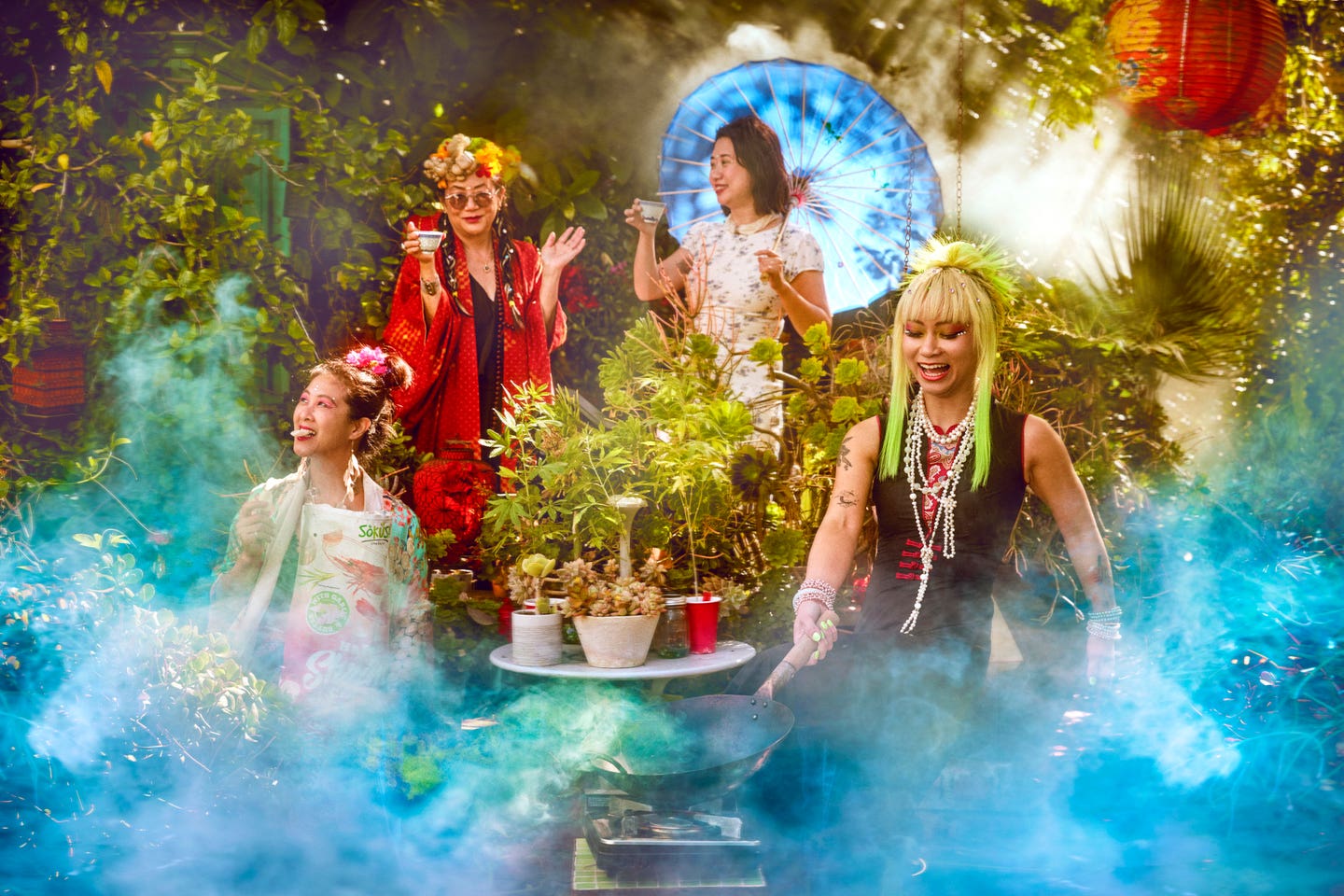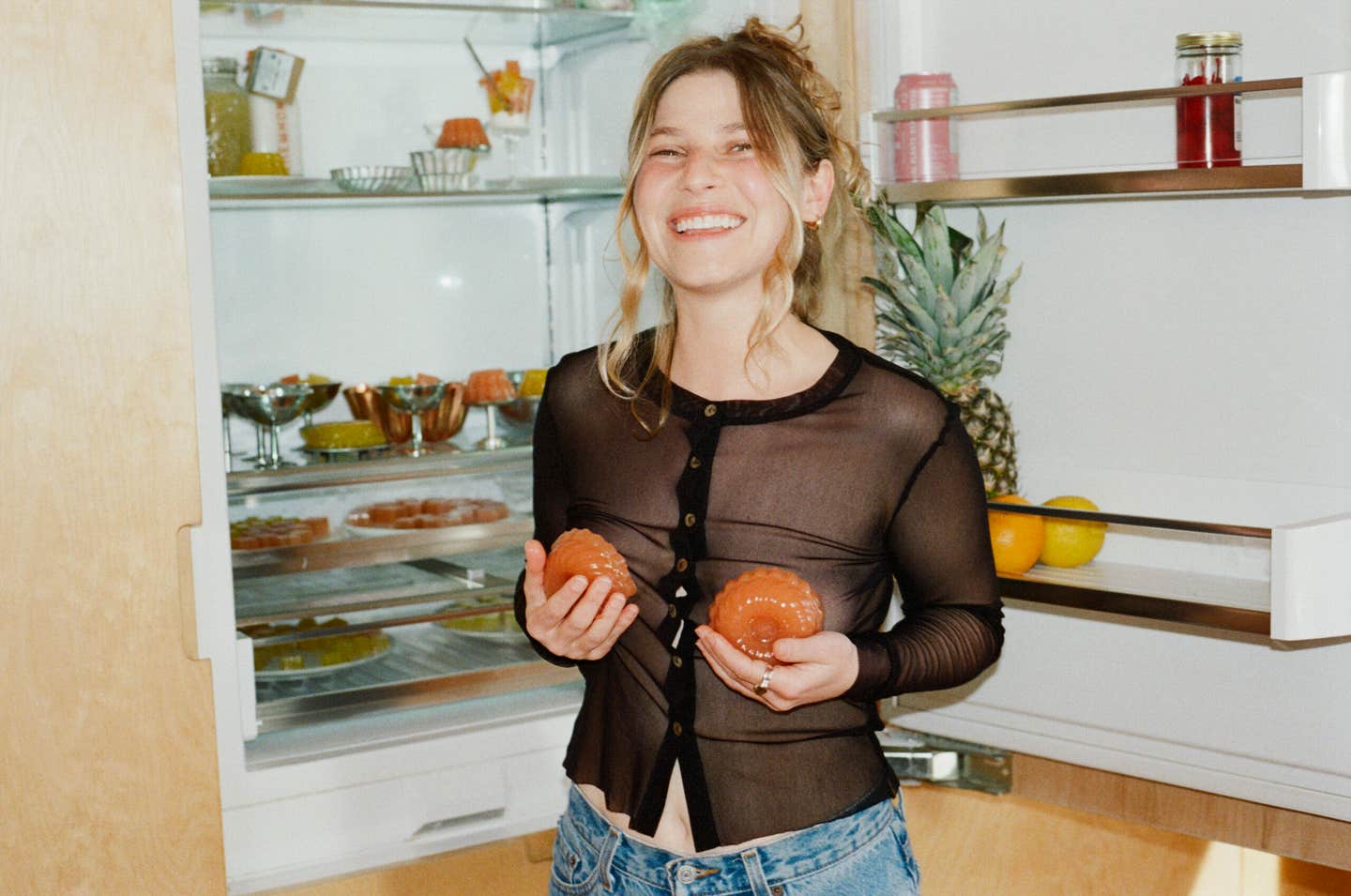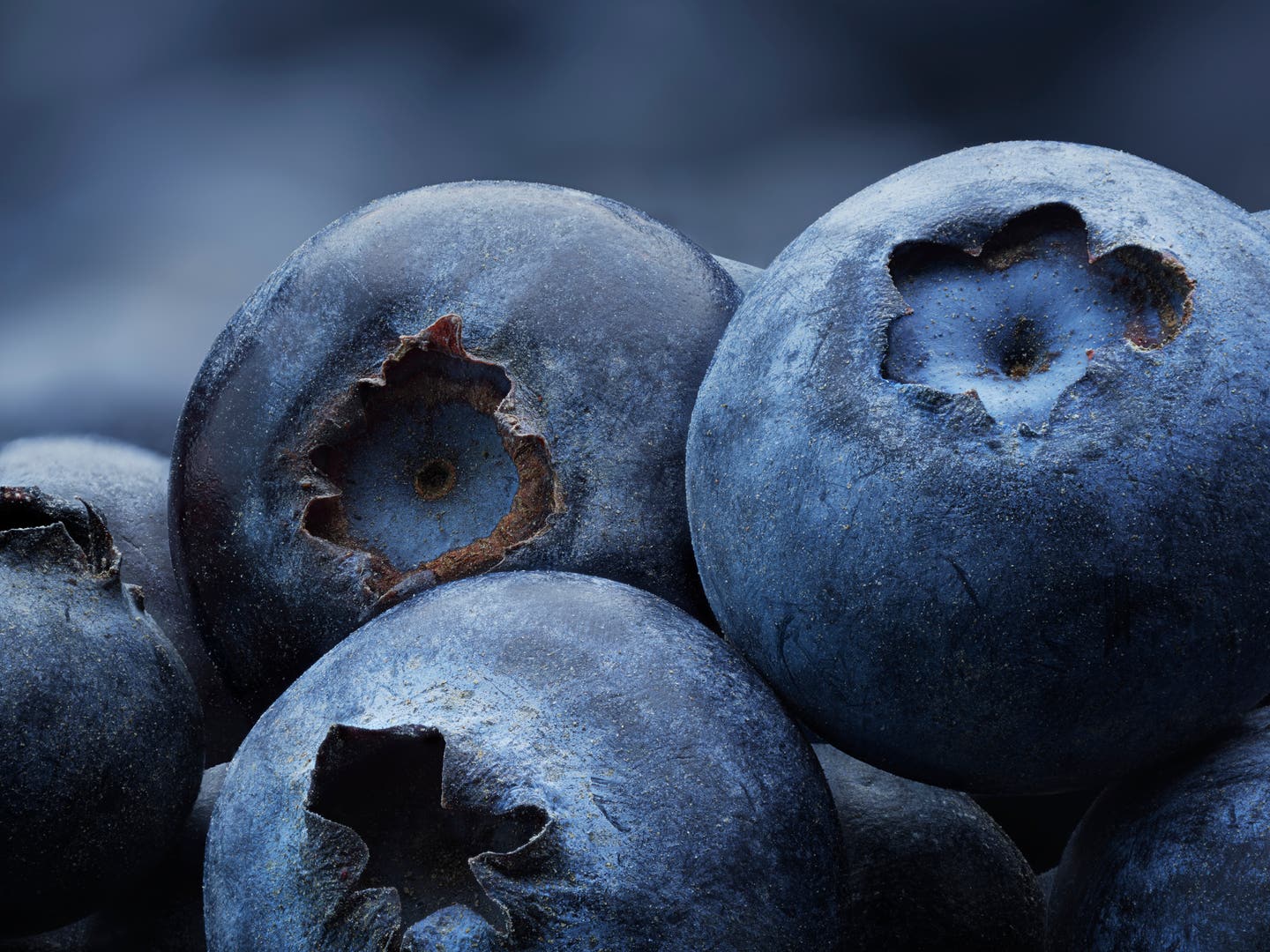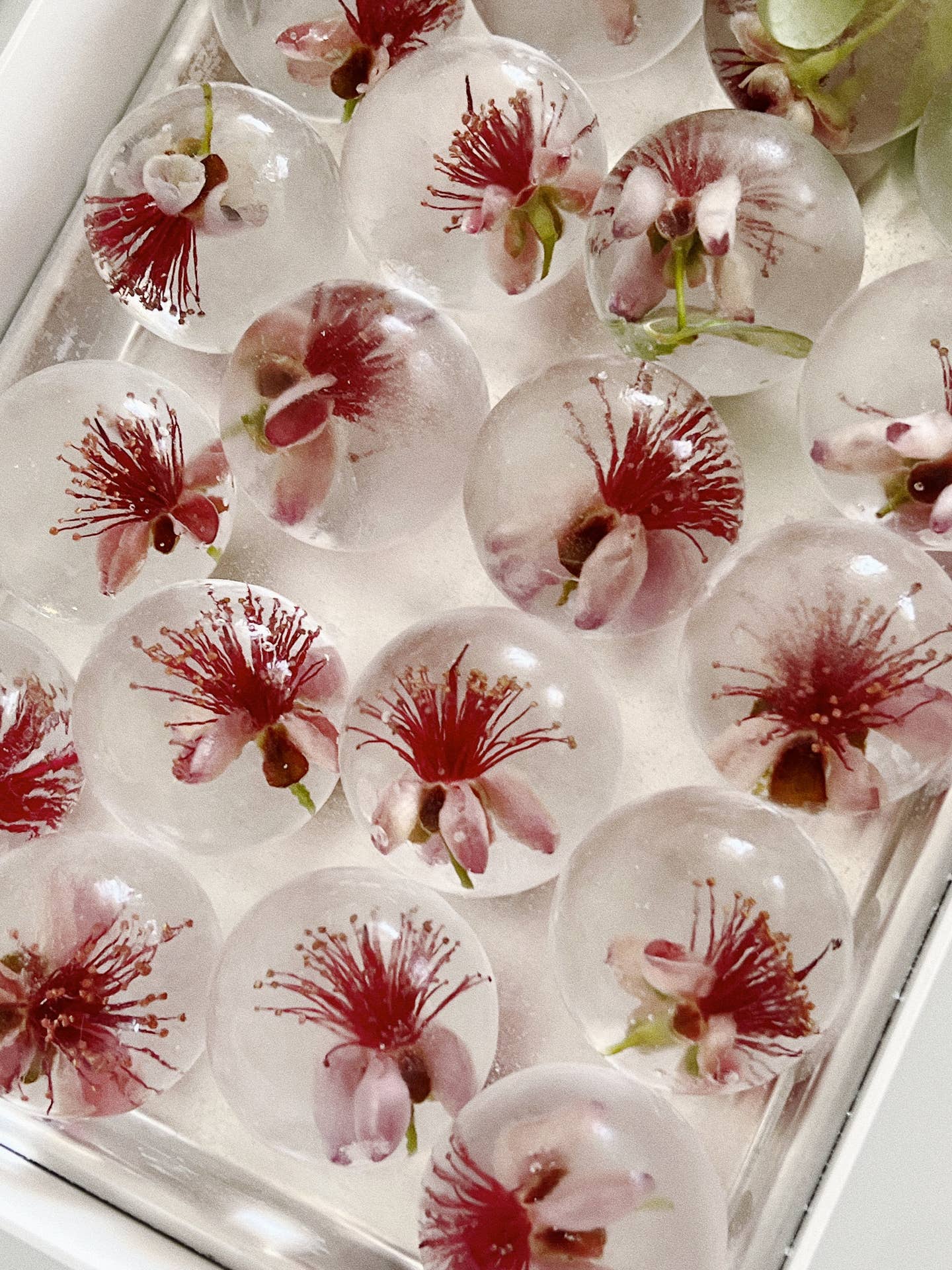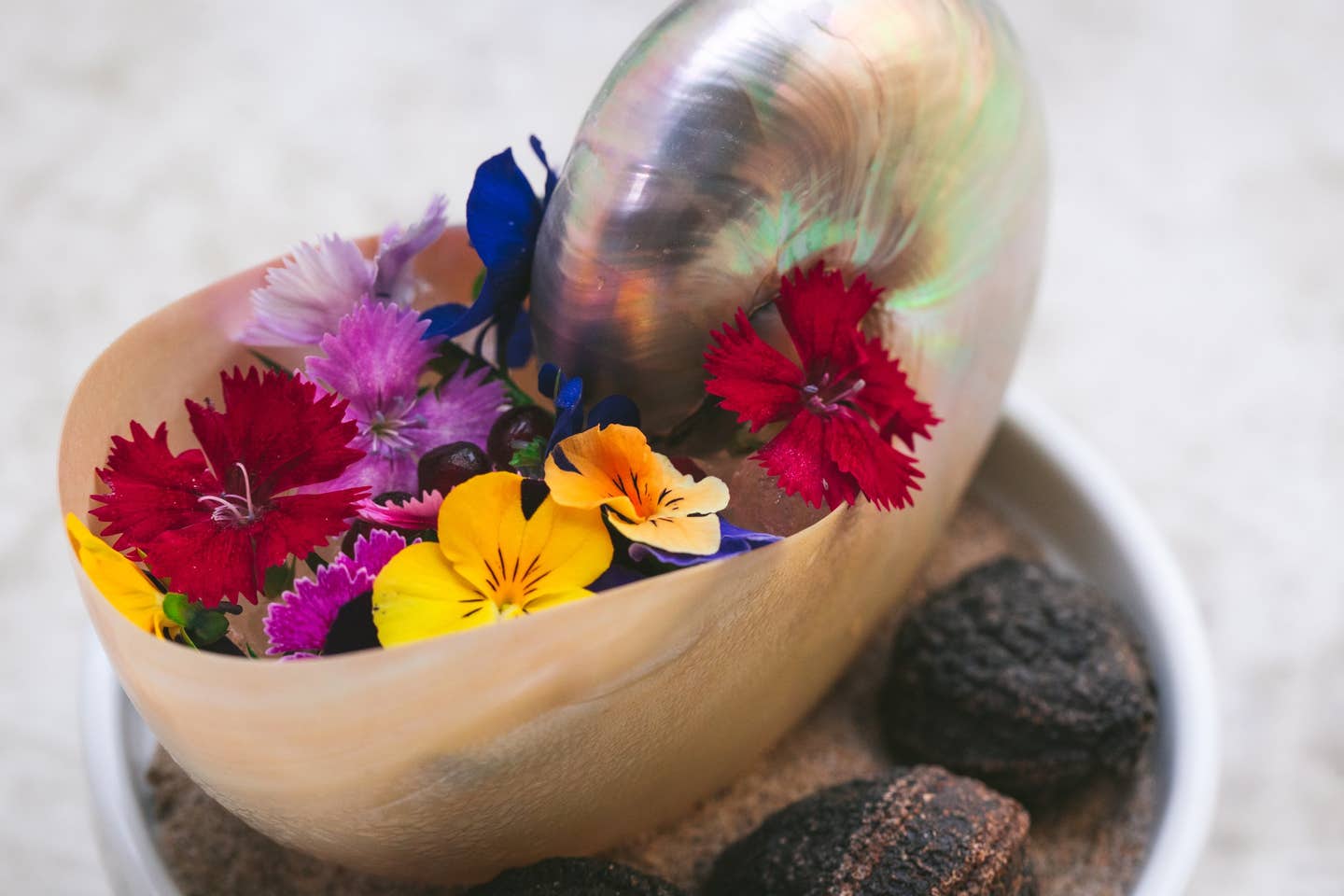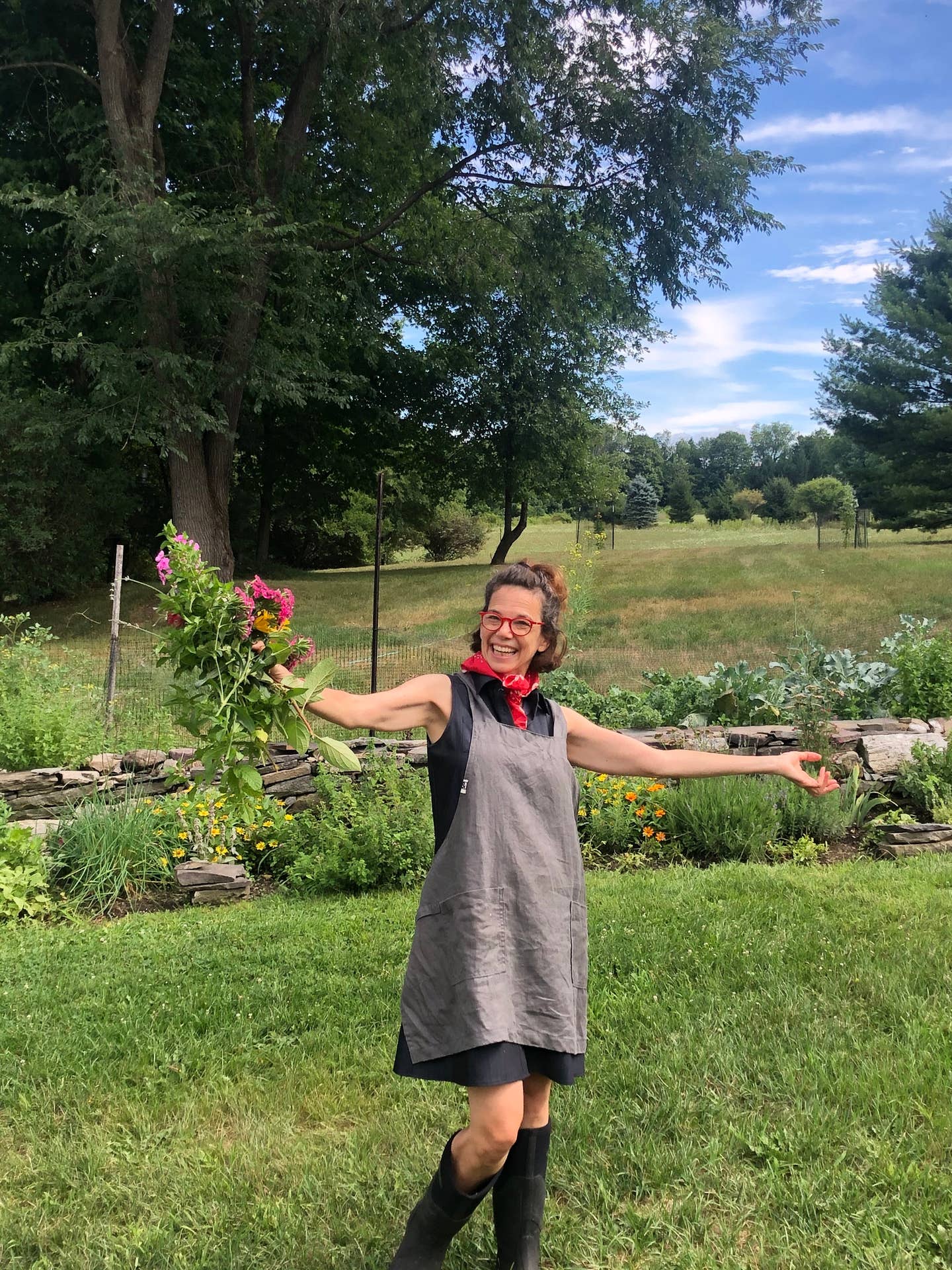Live Fire Cooking with Chainsaw LA’s Karla Subero Pittol
Karla Pittol floats between drifting smoke plumes as she makes her way between the various live fires that she maintains most evenings. Dinners here are packed with hot, happy bodies, toasting low-key craft cocktails and eating up all the coal-cooked and grilled delights that the all-female team of Chainsaw puts out for their sold-out events.
Karla Pittol floats between drifting smoke plumes as she makes her way between the various live fires that she maintains most evenings. Dinners here are packed with hot, happy bodies, toasting low-key craft cocktails and eating up all the coal-cooked and grilled delights that the all-female team of Chainsaw puts out for their sold-out events. First Pittol is under the loquat trees, herb-basting the night’s meal, which hangs on strings like a playful food harp, then she’s teaching her staff how to make arepas (stuffed corn cakes), before she heads to the grill to check out final details and the mise en place as guests start to arrive.
A Venezuelan-born Los Angeles-trained chef, Pittol has been at this for several years now, so food comes out at a comfortable pace versus the turn-and-burn of traditional restaurants. She lays her bountiful table with fried masa empanadas filled with gooey cheese, yucca bites, herb, and allium-heavy salads with big leafy greens to start the party. She is in her element later that evening when the whole fish, still sizzling, comes off the cinder block grill. She dresses it with red and green pungent sauces and acid from California’s best citrus. Posted behind her on the wall of the garage, the menu is written in handwritten script on butcher paper, teasing of ice box pies and frozen puddings for dessert. This is only one of the many small ways her architect father shaped Pittol’s ideas of hospitality.
Pittol herself is imaginative, intrepid and inspiring. In a small urban space, she’s cooking in a style usually found deep in the countryside. It’s a style of cooking reminiscent of ancient fires around the world, especially those of Latin America, where community and family events are centered around these flames. The food here is cooked at scale using DIY grills of stone or brick wherever the party calls for it. Timeless, it’s as much of the past as the future. A dedication to curation and preparation, the food is also embodied best in the sauces that accompany the main event. Simple food and simple cooking, with so much flavor captured in each sauce drop. This is the burning heart of hospitality and watching it kindled in front of you is transformative. Fires have always been the most intimate places, after all, where humans share story. Here is what Pittol shared with us.
Origins
Every night, no matter how long the workday was, [my father] would make dinner from scratch, and there was absolutely no excuse that I could make not to sit at the table and eat with him. No amount of homework or studying could justify not sitting at the table together for dinner. He’s a creature of habit and these were the core classics on constant rotation: arepas with chicken, or on simpler nights, just cheese. Spaghetti with a fresh tomato pomodoro or oregano lightly fried with garlic. Hungarian style goulash with the spaetzle and all, rolled dal roti with a hearty curry at the center, shepherd’s pie, and a soup he called pasta en brodo which was essentially a caldo with yucca, halved corn by the cob, tiny ditalini pasta and loads of parmesan to finish. On weekends or special occasions, it was, and still is, a Venezuelan style pollo a la brasa slow-roasting on a spit over the grill, fervently basted in a crushed garlic mojo. On the best days it’s bread, country style sourdough loaves that he’d dedicate a whole day to tending, only for the loaves to be devoured by our family minutes after they’d been pulled hot and fresh from the oven, dipped in good olive oil with a pinch of salt. My much younger little sisters call it '"Dad’s bread.” All my best memories of growing up have these very special dishes, their scents and flavors and warmth, at their core.
On Fire
I started my journey with cooking outside first because of practicality. The events I host started in the open-air space of my garage and the lush tree-lined driveway surrounding it. Once I started cooking outside, I never wanted to go back in. The realization that I could make a statement meal just about anywhere over a fire with a bit of open space, some cinder blocks, rocks or bricks, and a pile of wood was the catalyst. I started feeling more empowered as a cook, practicing the skill of creating something fabulous with very few resources. If you asked me to cook dinner for 60 tonight, all I’d have to ask you is where the nearest market and hardware store is, and where can I build the fire. This also ignited the desire to run around and make food anywhere and everywhere. Working this way creates a mental shift; now I crave more time outside, which has led me to live a much healthier lifestyle in general. On days when I do more delicate dessert work or bake, I know I’ll be working inside all day. So, I get up a little earlier to walk or hike for a couple hours or squeeze in a few laps around the block, while the crusts and custards are cooling. All that momentum, combined with the fresh air, it really lights me up.
On Process
You can make anything, and I mean anything taste amazing with a combination of fresh herbs, citrus, garlic, and salt. For example, a Mojo sauce: orange and lime juice, the zest of each, smashed garlic peels and all, oregano, water, and enough salt to make it salty like the ocean.
I use this to baste almost all my meat or vegetables over the fire. The oregano can be swapped for almost any herb: mint, parsley, dill, cilantro, rosemary. Or you can mix them all. The lime can be swapped for lemon, the orange for tangerine, the key is to have at least one tart citrus to balance out the sweet. Swap the water for olive oil, cut the salt a bit, and now you have a marinade or a salad dressing.
My crutch citrus is the Mandarinquat from JJ’s Lone Daughter Ranch. It’s a cross between a mandarin and a kumquat with delicious soft edible skin. I slice the fruit into thin wheels and leave them whole or pound them into sauces and marinades. It’s a niche ingredient, but you can emulate the flavor with a fresh squeeze of mandarin and lime juice and a bit of their zest.
My other non-negotiable ingredient is Maldon Smoked Sea Salt. I put it in everything from sauces to cocktails. When I say everything, I really mean everything, savory and sweet. Last notes: for me, all the herbs must be fresh and not dried.
Future Food
Right now, there is a level of expressionism in food that exists as a direct result of going through the pandemic.
The rise of the home kitchen, the pop-up, the micro-bakery—this is how I’m doing my best eating.
I love that the fear and stigma around opening a restaurant is starting to dissipate as talented cooks realize that the stakes can be as high or as low as they want when testing a passion project as a business for profit. It’s the normalization of both these series and one-off food events where the food is often on a par with the best restaurants, and it’s being delivered at the chef’s personal and comfortable pace.
In this way the cook gets to share the food they make from the heart, without the pressure, overhead, and business savvy of landing it directly in a brick and mortar or having to be sure that that’s the right trajectory for the project.
This moment in food became wildly important for so many cooks laid off in the pandemic and, by the grace of an unemployment check, were able to invest in themselves and their cooking and prove that good food speaks for itself, and that people will come for it.
The list of projects that started as pandemic pop-ups-turned restaurants is getting longer and longer and it’s so exciting because we just get to try so much more than ever before.
There’s a whole culture developed around it now. Pop-ups are the future!
Learn more about Karla Subero Pittol and Chainsaw LA:
@karlasuberopittol
@chainsaw.la
